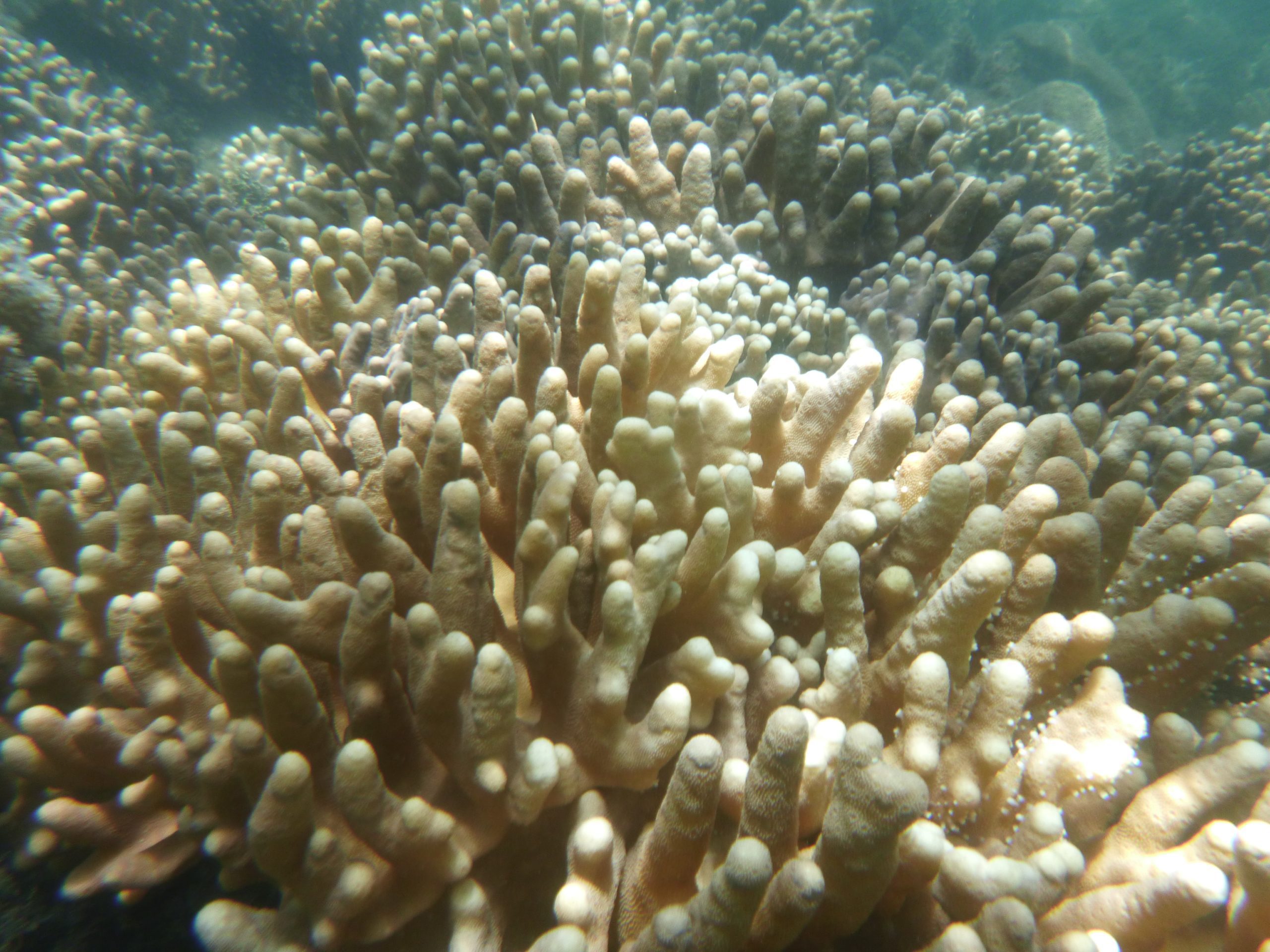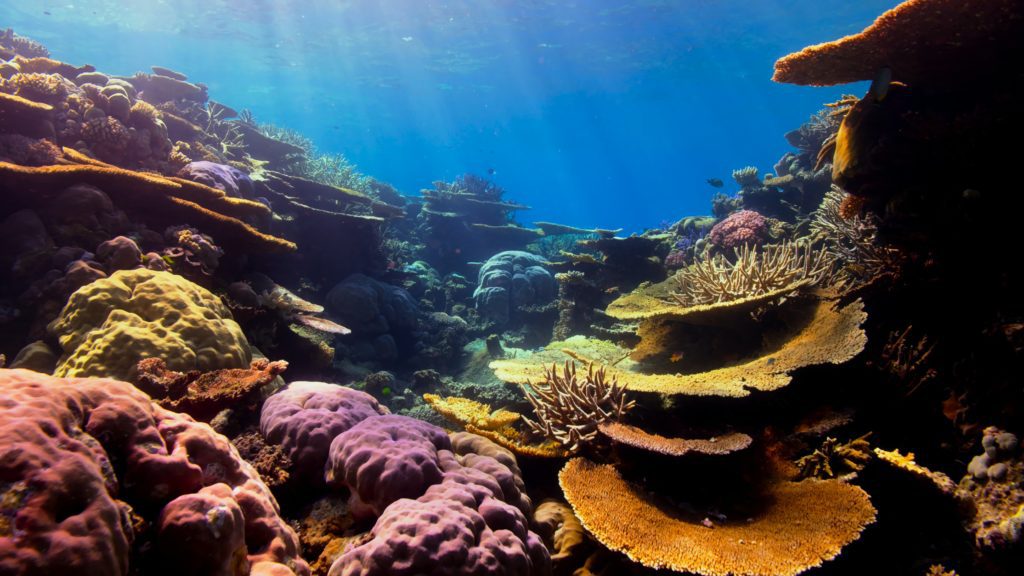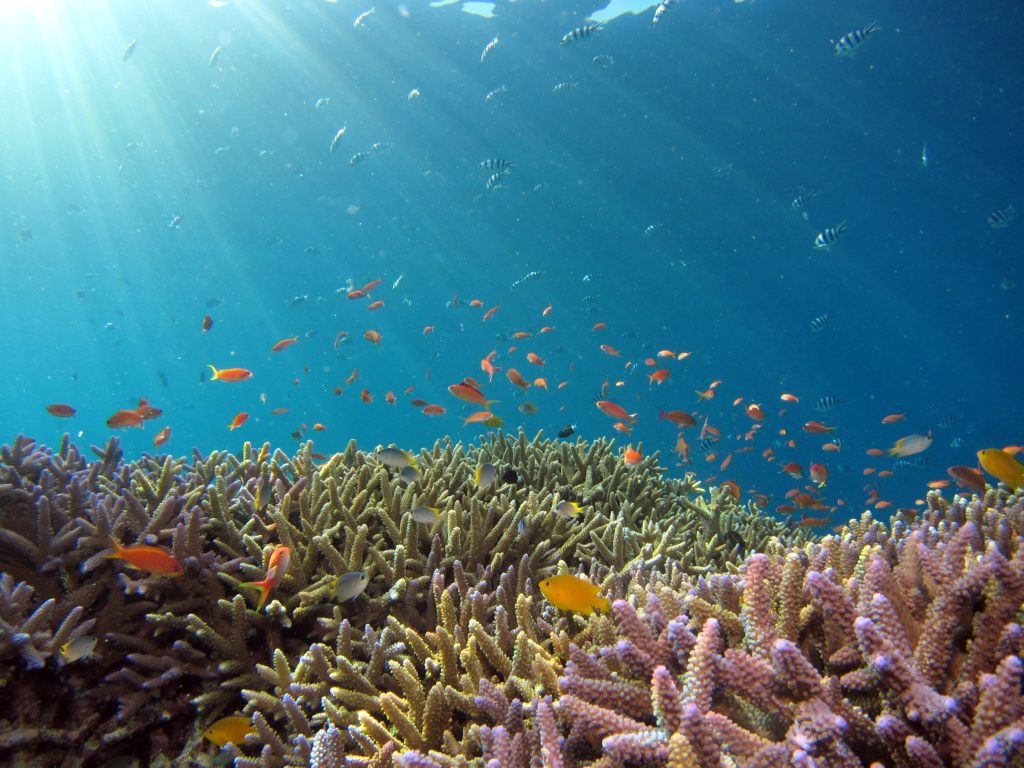10/17/2022 | pH | 9 MINUTE READ
The Importance of pH and Water Quality for Coral Reefs

Coral reefs are vast underwater structures comprised of the skeletons from colonial marine invertebrates. These reefs are found all over the world and are essential for a balanced ecosystem. These structures have become home to thousands of different organisms, which include microorganisms, anemones, crustaceans, fish, and corals.
Along with the underwater ecosystem, coral reefs have also become linked with the world’s economy as well as the food chain. When looking at national parks, coral reefs are an important component of tourism, which fuels local economies. Destinations throughout Florida, Hawaii, and Australia rely on their reefs and beaches to bring in tourists and keep the economy afloat.
Over time, coral reefs have become increasingly damaged and polluted, which has caused the water to become cloudier. Because of this pollution, beaches have become less hospitable and aquatic animals have become endangered. Without having access to aquatic animals and coral reefs, island and coastal economies would worsen, which puts livelihoods at risk.
The damage that has already been done to coral reefs because of pollution is difficult to calculate. One measurement that’s highly important when assessing how much coral reefs are being damaged is the pH of water. The right pH levels need to be maintained to make sure that the quality of the water is sufficient for coral reefs to survive and thrive. This article takes a more in-depth look at the how pH levels and the quality of water impact coral reefs.

What are Coral Reefs?
Coral reefs are underwater structures that have been made by the skeletons of various colonial marine invertebrates. The invertebrates that are found in these reefs are referred to as coral. Keep in mind that some of the corals are known as hard corals that remove calcium carbonate from the surrounding seawater. This process leads to the corals developing a durable and long-lasting exoskeleton that essentially protects the softer bodies underneath.
However, these reefs don’t consist solely of coral. In fact, they are their own marine ecosystems that are made up of hundreds of different species of mollusks, fish, crustaceans, and numerous other invertebrates. You can find coral reefs in many locations around the world, the largest of which are present in shallower and more tropical waters. At the moment, the most endangered and largest coral reef is the Great Barrier Reef, which is found in Australia and is measured at over 1,500 miles long.
Why are Coral Reefs Important for the Ecosystem?
Coral reefs have numerous roles in the broader marine ecosystem as well as the global ecosystems. The reefs that haven’t been damaged too much are able to protect coastlines from the adverse effects of tropical storms and waves. They also provide shelter and habitats for myriad marine organisms.
These reefs assist with nitrogen and carbon fixing, nutrient recycling, and water filtration. They also provide essential nutrients and nitrogen for the life that’s found in and around the coral reefs. When coral reefs become damaged, the entire ecosystem begins to falter.

How are Coral Reefs Affected by pH and Water Quality?
Coral reefs are being damaged by the poor water quality as well as pH levels that aren’t accommodating. When pollution in a body of water increases, the pH levels go down, which means that the water becomes more acidic. The increasing acidity of water makes it much more difficult for corals to build their exoskeletons, which is essential for the hard corals to survive.
Many corals grow their skeletons in an upwards direction to ensure that they have ample sunlight. During the growth process, the exoskeletons thicken for additional reinforcement. The rising acidity in the ocean creates issues with the thickening process, which results in the skeletons having a reduced density. In this scenario, the exoskeletons are considerably more vulnerable to cracking or breaking.
The Woods Hole Oceanographic Institution published a study in 2018 that centered around the acidification of ocean water and what this means for coral reefs. Along with proving that acidic water causes the coral to have a thinner exoskeleton, this research also allowed for more precise estimations of how acidification will affect coral reefs in the years to come.
Poor Water Quality and Land-based Runoff
There are many reasons why the quality of ocean water can be poor. For instance, land-based runoff involves excess water flowing along the surface of the land before reaching rivers and creeks. This process occurs after irrigation or rainfall. It’s common for runoff to wash fertilizers, chemicals, sediment, and pesticides into nearby bodies of water, which further increases pollution.
All creeks and waterways eventually reach the oceans, which is why chemical and sediment runoff from land-based activities and agriculture is among the most severe threats to coastal coral reefs all over the world. When chemicals and other pollutants reach the ocean water, the quality of the water will degrade as acidity increases. In this situation, pH levels will invariably decrease.

Chemical Pollution
In the event that too much fertilizer is applied to various crops, the excess fertilizer will wash directly into waterways and rivers as land-based runoff. Eventually, these chemicals will reach the ocean and the coral reefs. The nitrogen found in these fertilizers can lead to the development of invasive algal blooms. These blooms are a food source for the crown-of-thorns starfish. It’s possible for these starfish to destroy coral, which leads to vast coral reefs being in danger.
Herbicides and pesticides are regularly found in high concentrations in rivers and lakes nearby ocean water. When applied properly, herbicides will kill weeds by stopping them from growing. However, when herbicides reach coral reefs, they can create growth issues with other plants that call coral reefs their home.
Sediment Pollution
Sediment pollution occurs because of overgrazed grasslands and tree clearing issues. These problems lead to soils eroding and washing directly into nearby rivers and creeks. Sediment that’s discharged from rivers is known to reduce the amount of sunlight that corals and seagrasses have access to, which can lead to coral growth being inhibited.
Crown-of-Thorns Starfish
The crown-of-thorns starfish is a type of marine invertebrate that feeds on coral. These species of marine invertebrates occurs naturally in many coral reefs. However, the right conditions in the water can lead to outbreaks of these starfish, which can substantially damage any nearby reefs.
Studies have found that outbreaks are caused by numerous factors, the primary of which is nutrient pollution. When the water is heavily polluted from land-based runoff, algal blooms can develop. These blooms provide crown-of-thorns starfish with the food they need to survive.
EPA Research About Coral Reefs
The Environmental Protection Agency (EPA) has performed extensive research on coral reefs and has detailed their primary concern about the future of these reefs. The EPA’s current mission with the Clean Water Act (CWA) is to make sure that the bodies of water throughout the U.S. are protected and that their biological, chemical, and physical integrity is restored.
The EPA protects water quality by setting certain water quality criteria that companies and municipal facilities must adhere to. The Clean Water Act determines the criteria for water quality based on the condition of organisms that inhabit various bodies of water. These organisms include any that are found in coral reefs. The EPA has found that coral reefs face such threats as:
- Ocean warming
- Physical damage
- Acidification
- Sediment pollution
- Contaminant pollution
- Nutrient pollution

Regulating the pH of Coral Reef Environments
Regulating the pH of coral reef environments is essential towards making sure that aquatic plants and animals are able to grow without issue. One type of coral reef environment is an aquarium, which is something that you can regulate on your own. For coral reefs in the ocean, most of the regulation must be done by the earth. A drop in pollution throughout the waterways would also help coral reefs survive in the future.
Research performed in aquariums can inform you of how to properly regulate pH in other coral reef environments. In ocean environments, the pH of ocean water is typically regulated by the dissolved chemicals that flow from nearby rivers to the ocean. These beneficial chemicals come directly from rocks present in the rivers. Once these chemicals reach the ocean water, the pH levels stabilize.

Aquarium-based Research
Aquarium-based research of coral reefs has provided a considerable amount of information about how to properly take care of coral reefs. A primary reason why pH levels decrease rapidly is because of how intense the acidity in water is. In a reef tank, there are many causes of acid formation, the primary of which include:
- Too much CO2 because of respiration
- Organic acid production from metabolic wastes
- Nitric acid that comes from nitrification
By using a pH sensor, you can consistently monitor the quality of aquarium water to determine if pH levels are increasing or decreasing. In the ocean, pH levels don’t usually drop too much because of chemicals like hydroxide, carbonate, calcium, and borate being present in large concentrations.
However, these concentrations of chemicals aren’t typically present in aquariums, which can cause corals in the aquarium to quickly degrade. There are methods that can be used to increase the pH of aquarium water and improve the health of corals.
These methods include reverse osmosis, placing dolomite gravel in the water, decorating the aquarium with limestone, or placing a mesh bag of dolomite gravel directly into the filter. Taking regular measurements of the water’s pH should help you determine if these methods are effective.
Why More Acidic Conditions Benefit Photosynthesis
When carbon dioxide (CO2) dissolves in water, it causes the water to become more acidic, which is one issue in ocean water. While there have been some past concerns about the negative effects of increasing CO2 on pH levels, there are signs that indicate acidic conditions are able to benefit photosynthesis and plant growth.
While acidic conditions can be somewhat damaging to coral reefs, it’s been found that the calcification process that occurs during photosynthesis produces CO2, which leads to pH levels dropping. However, the beneficial aspects of calcification mean that the issues of increased acidity are somewhat mitigated.
Coral reefs have become increasingly endangered over the past few decades, which is why it’s important to take steps to improve the quality of ocean water and reduce the amount of pollution that enters this water. Because of the importance that coral reefs have for economies and aquatic ecosystems all around the world, monitoring the water’s pH levels will be key towards enacting long-term change in this regard.
Posted by Dominic O'Donnell on October 17, 2022
Sensorex is a global leader in the design and manufacture of quality sensors for water quality and process applications. The company offers more than 2000 sensor packages for pH, ORP, conductivity, dissolved oxygen, free chlorine, chlorine dioxide, UV transmittance and other specialty measurements, as well as a full line of sensor accessories and transmitters. Its expert technical support engineers solve analytical sensor challenges with custom designs and off the shelf products.




